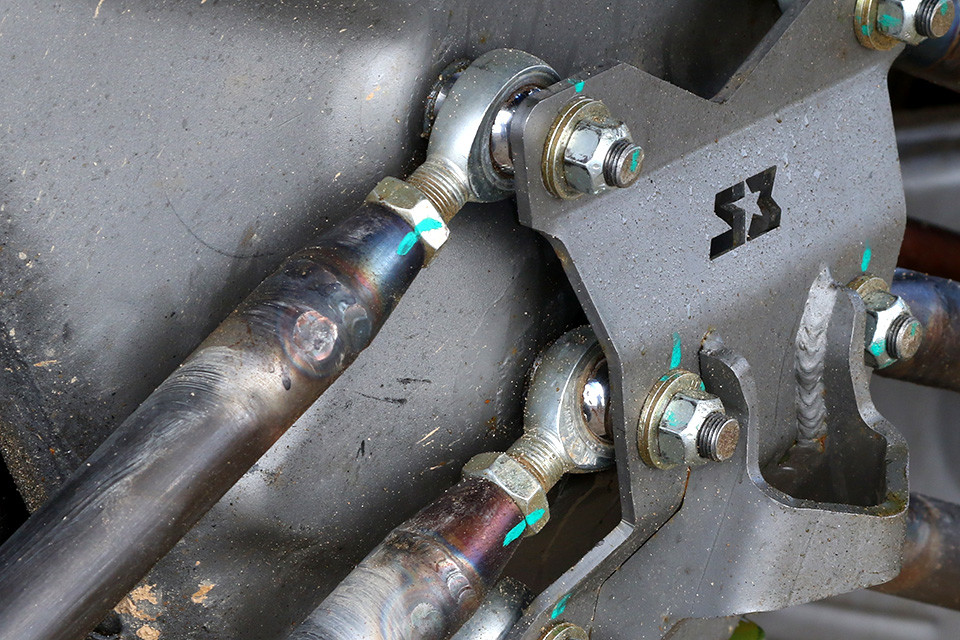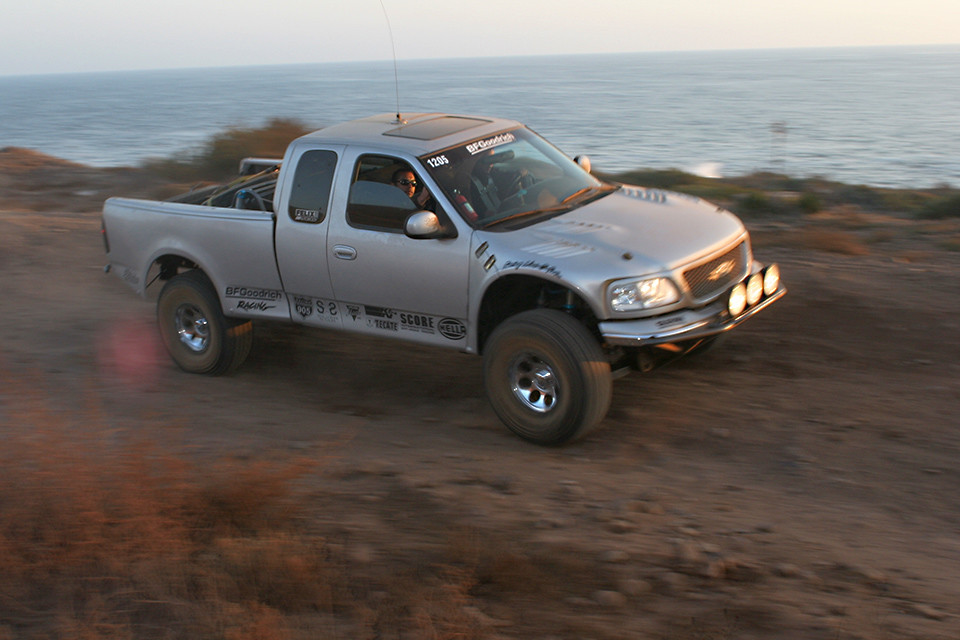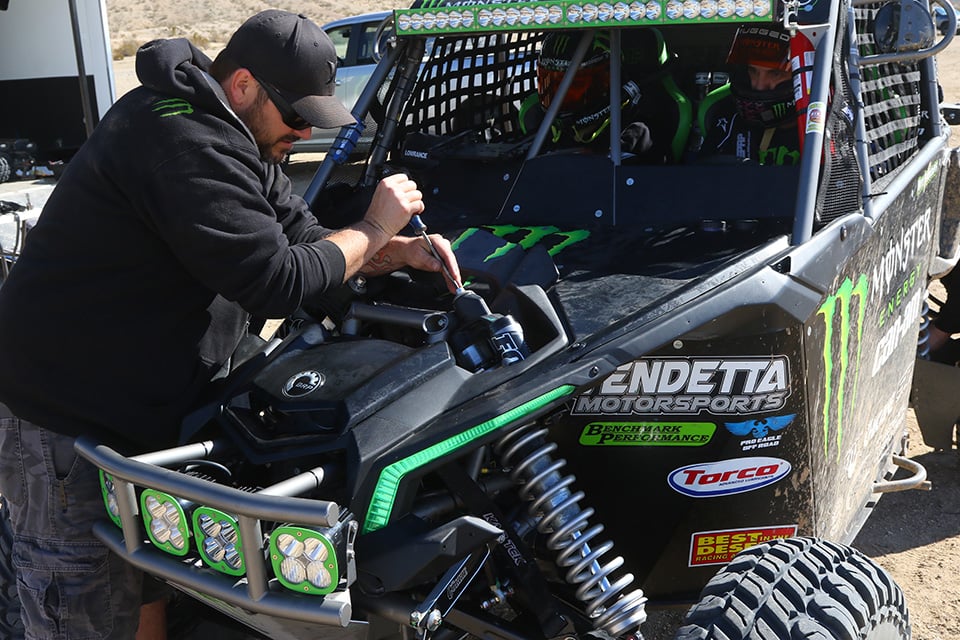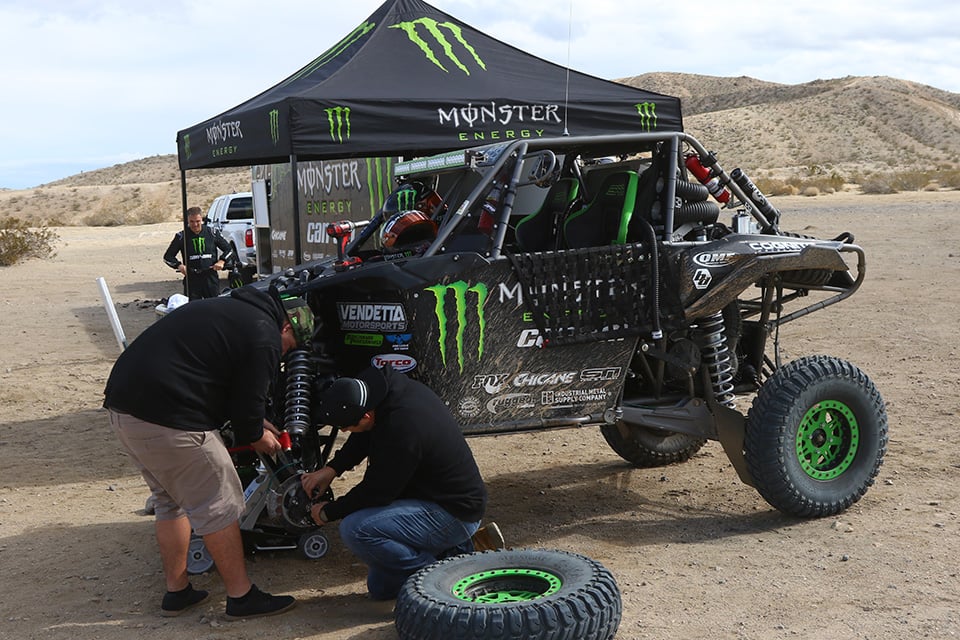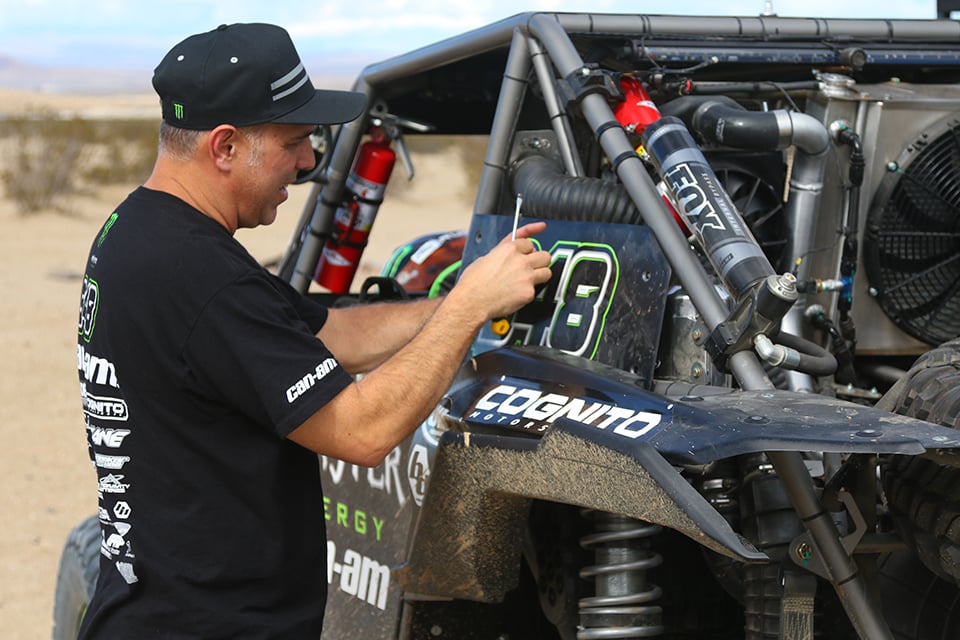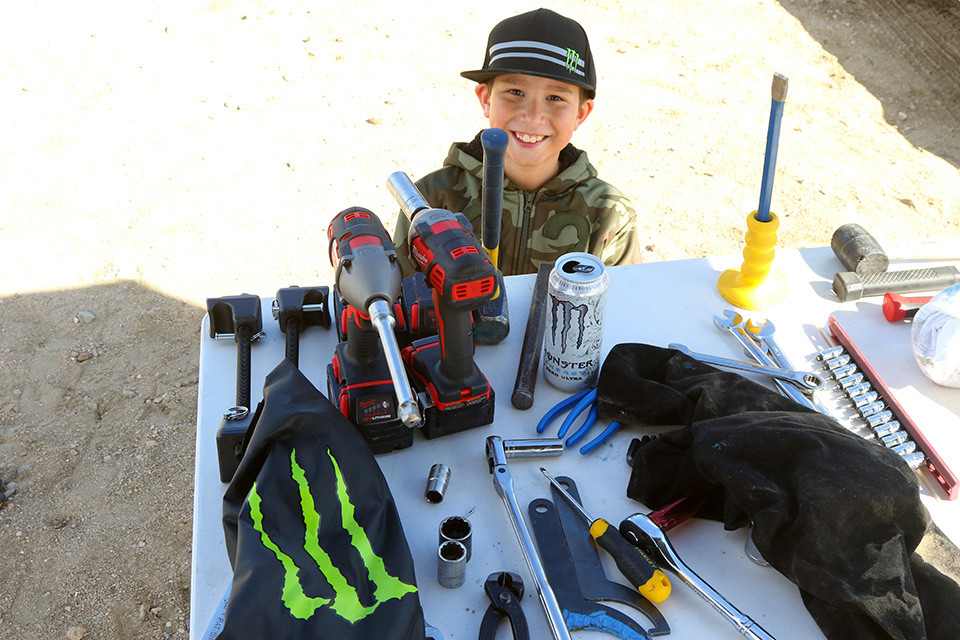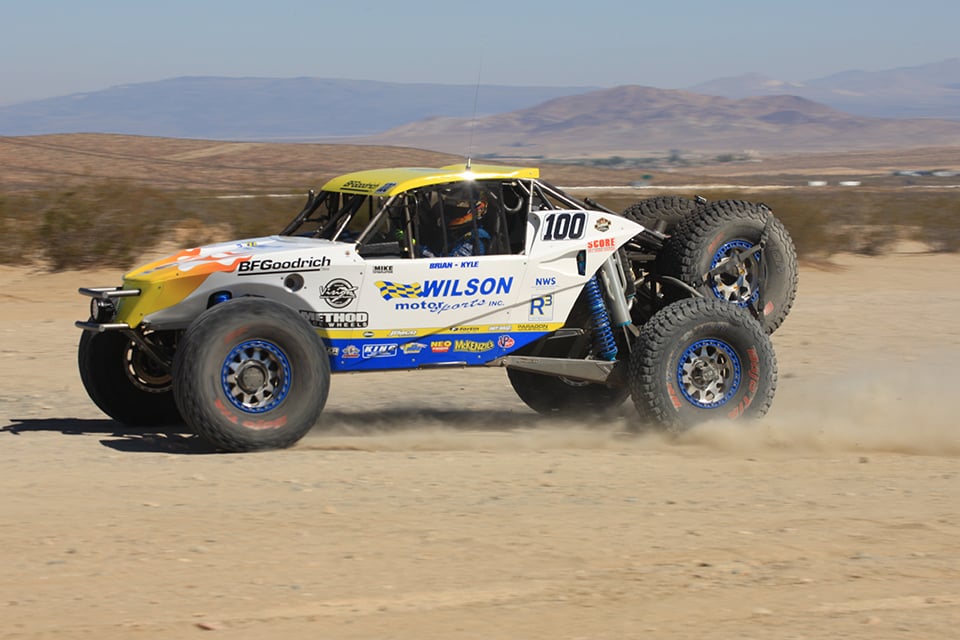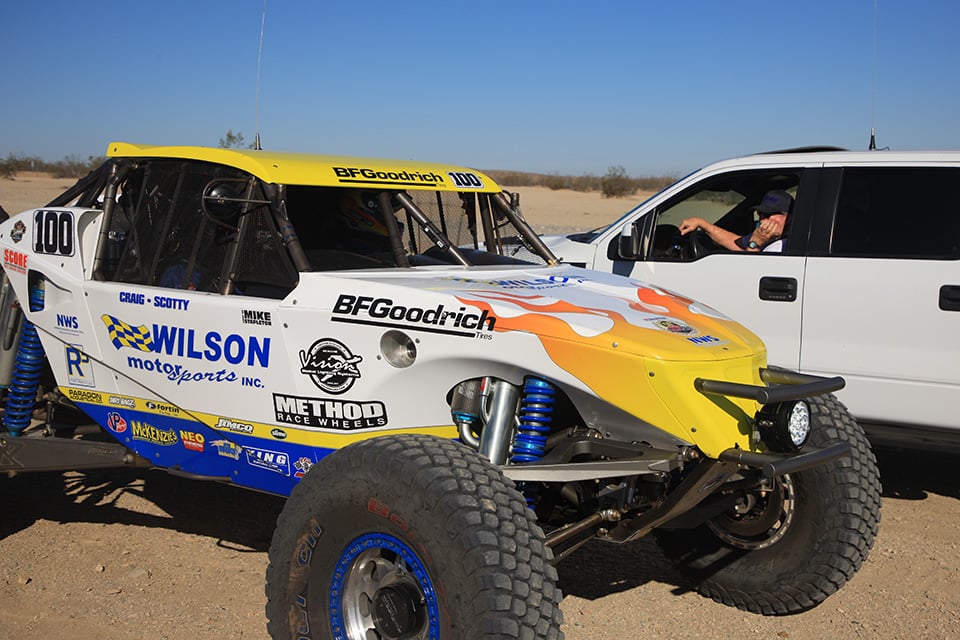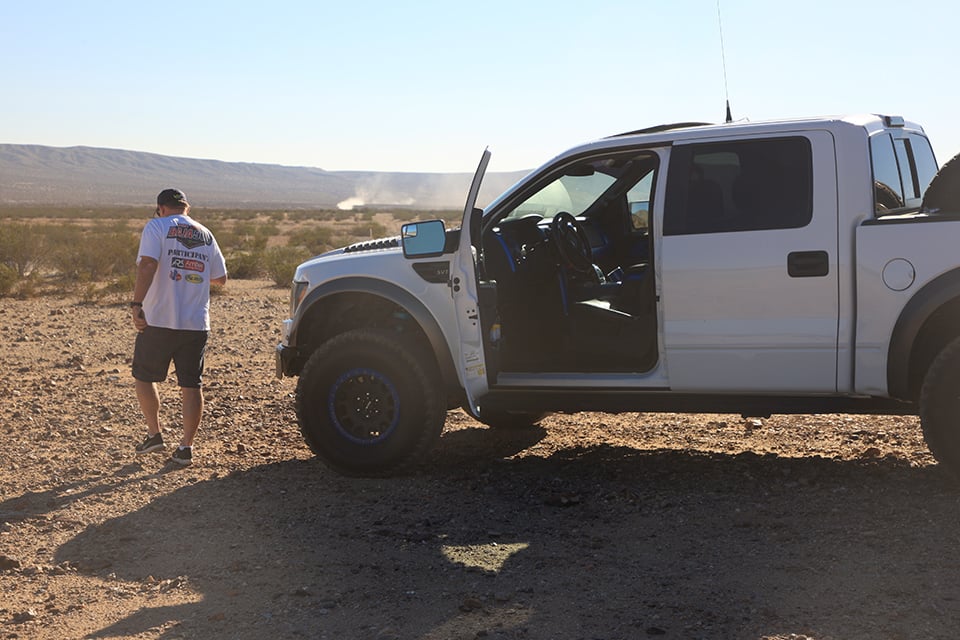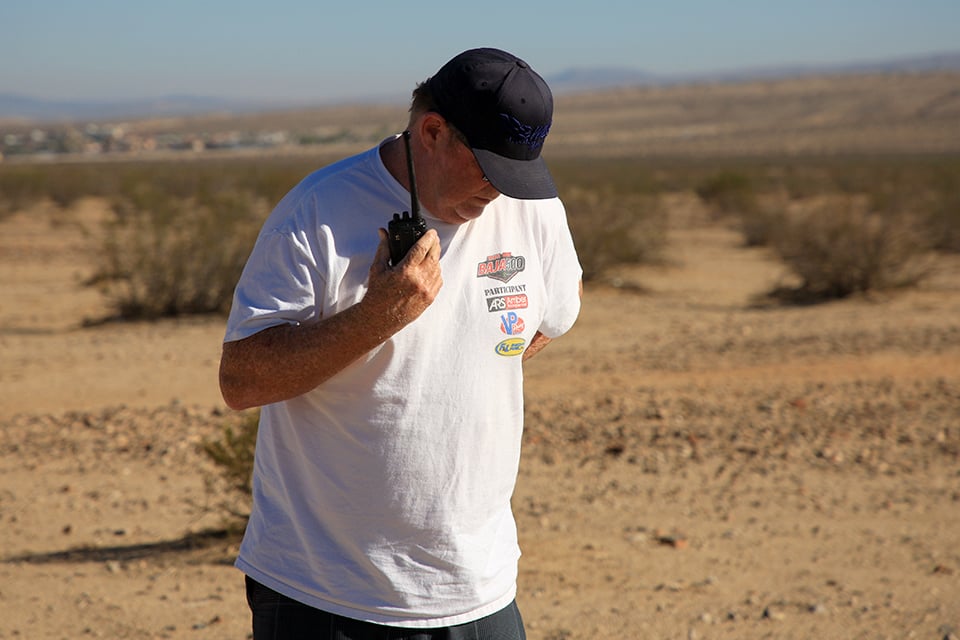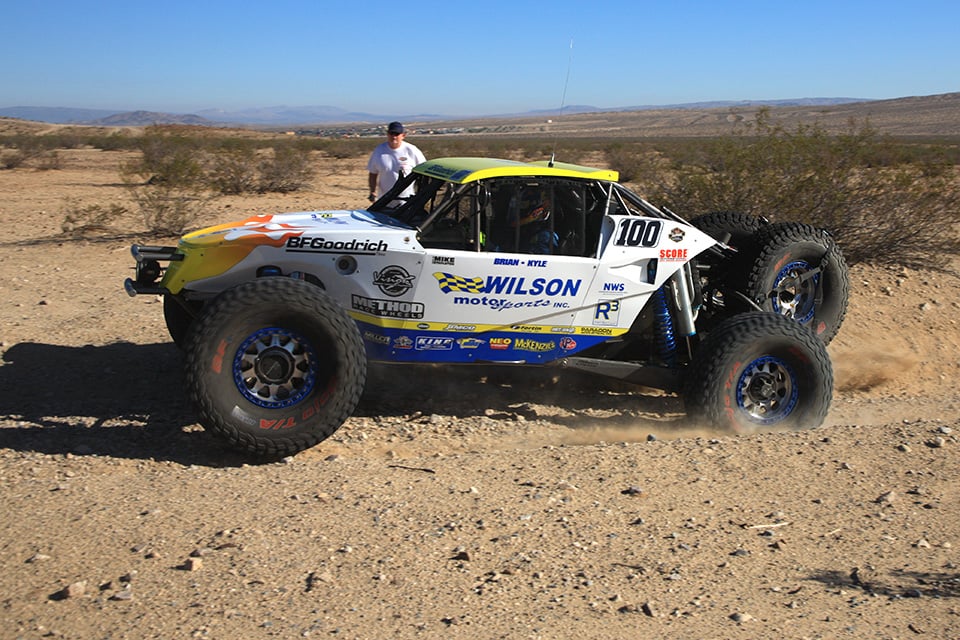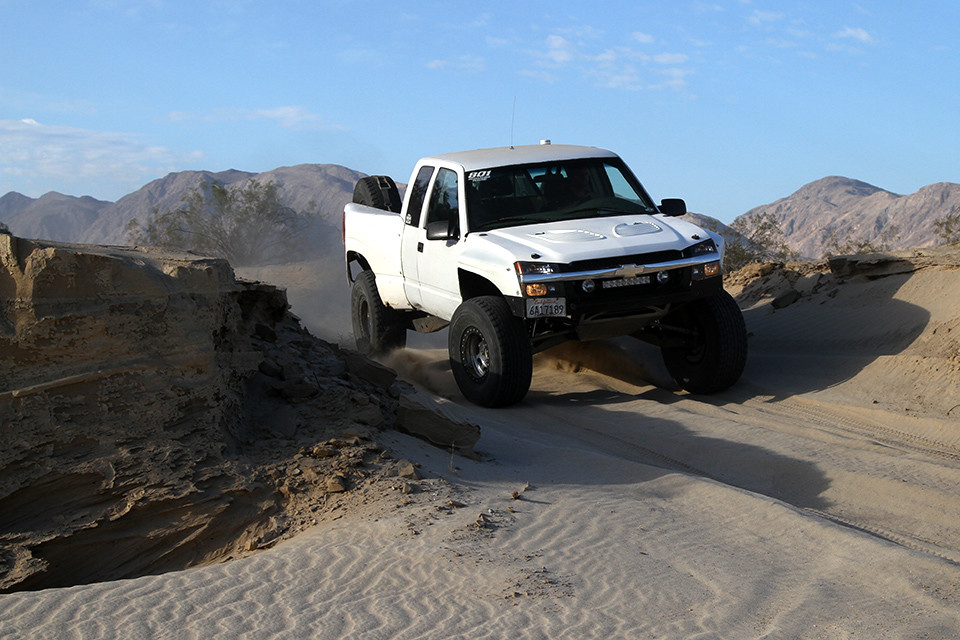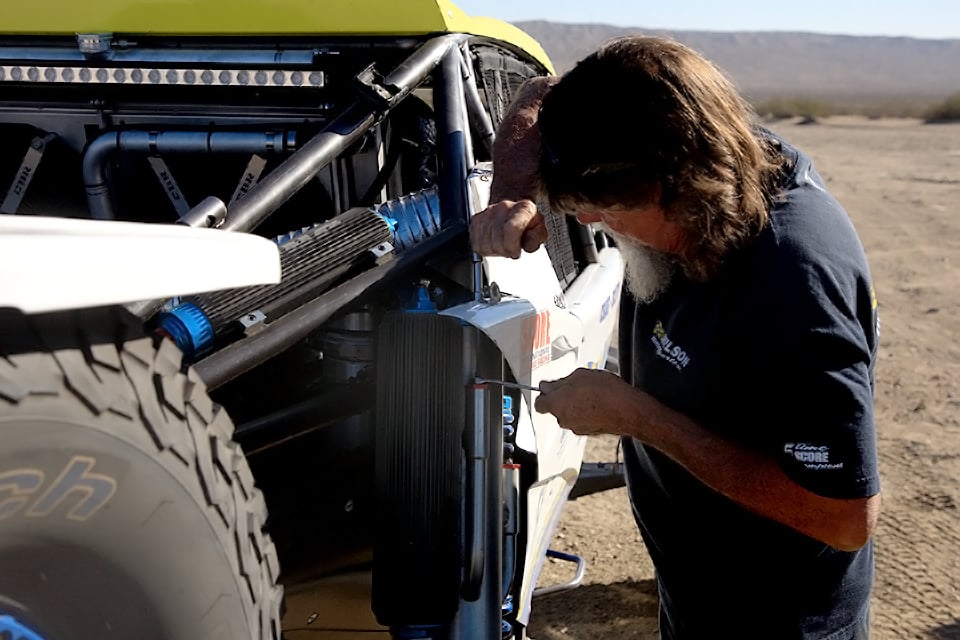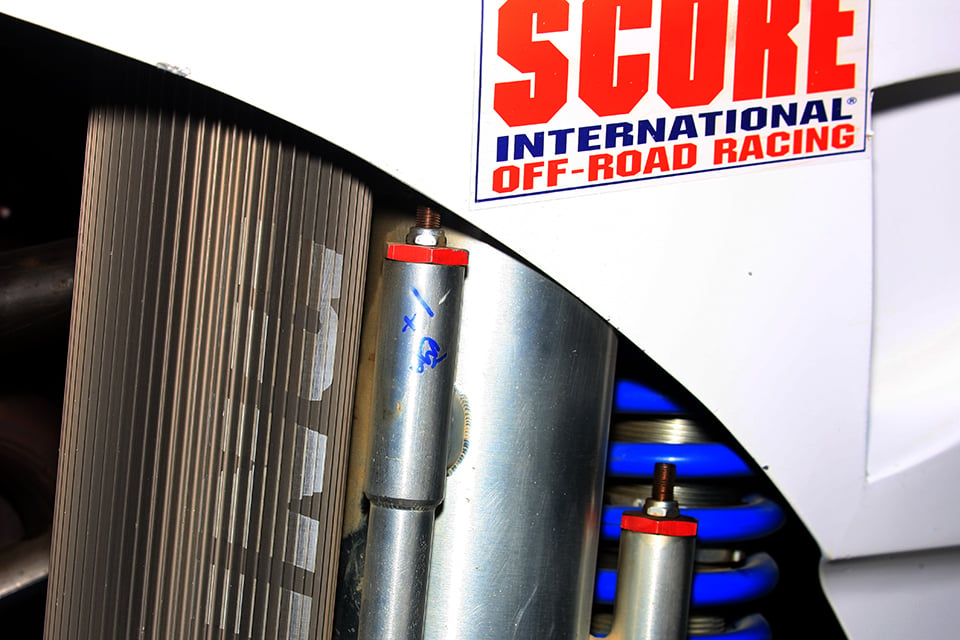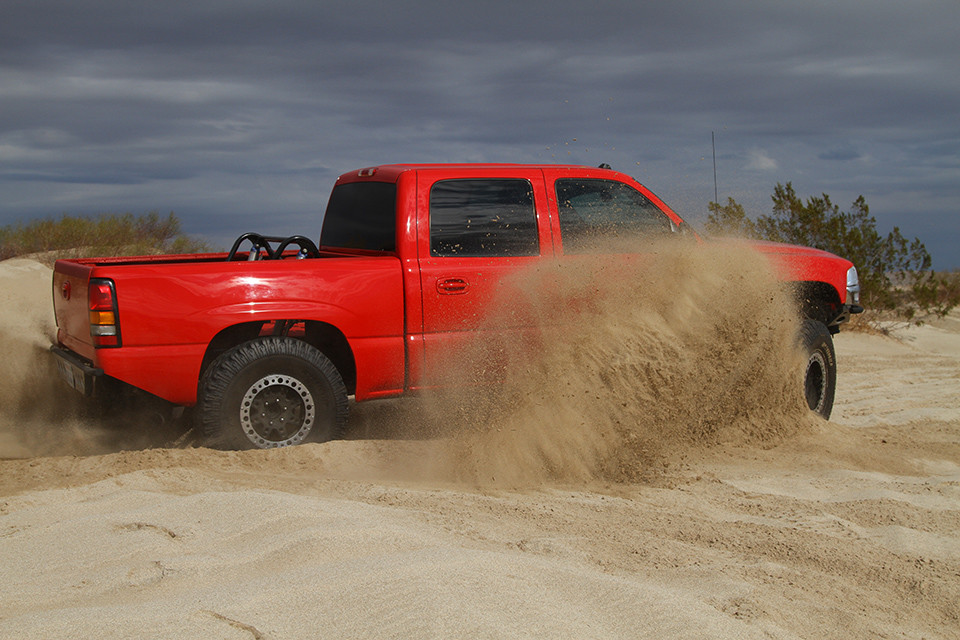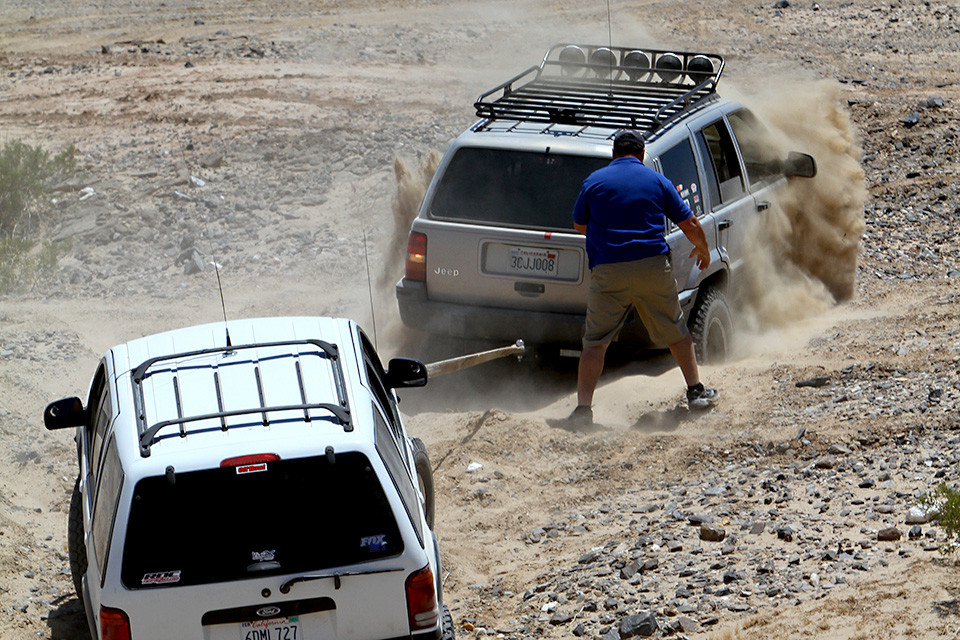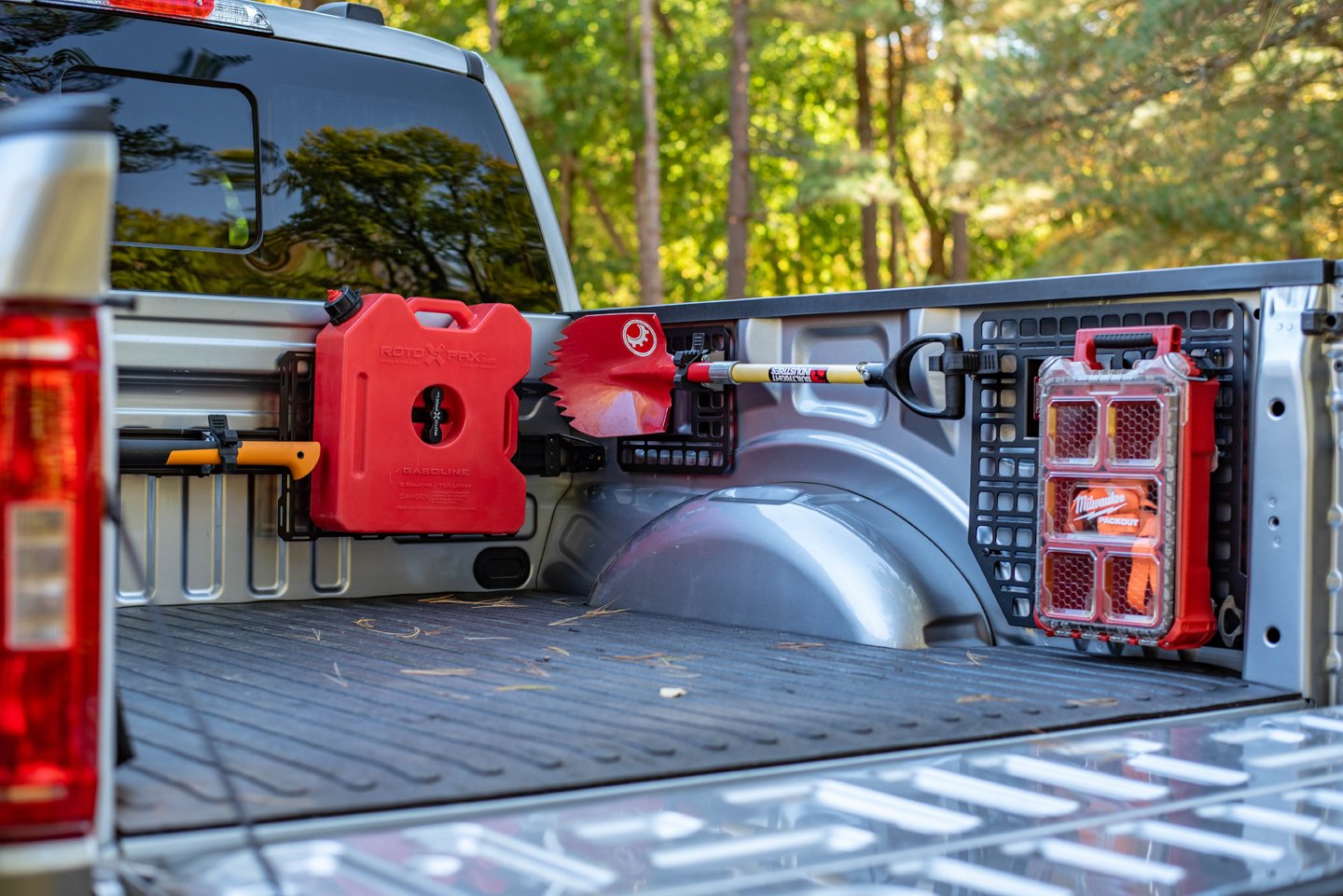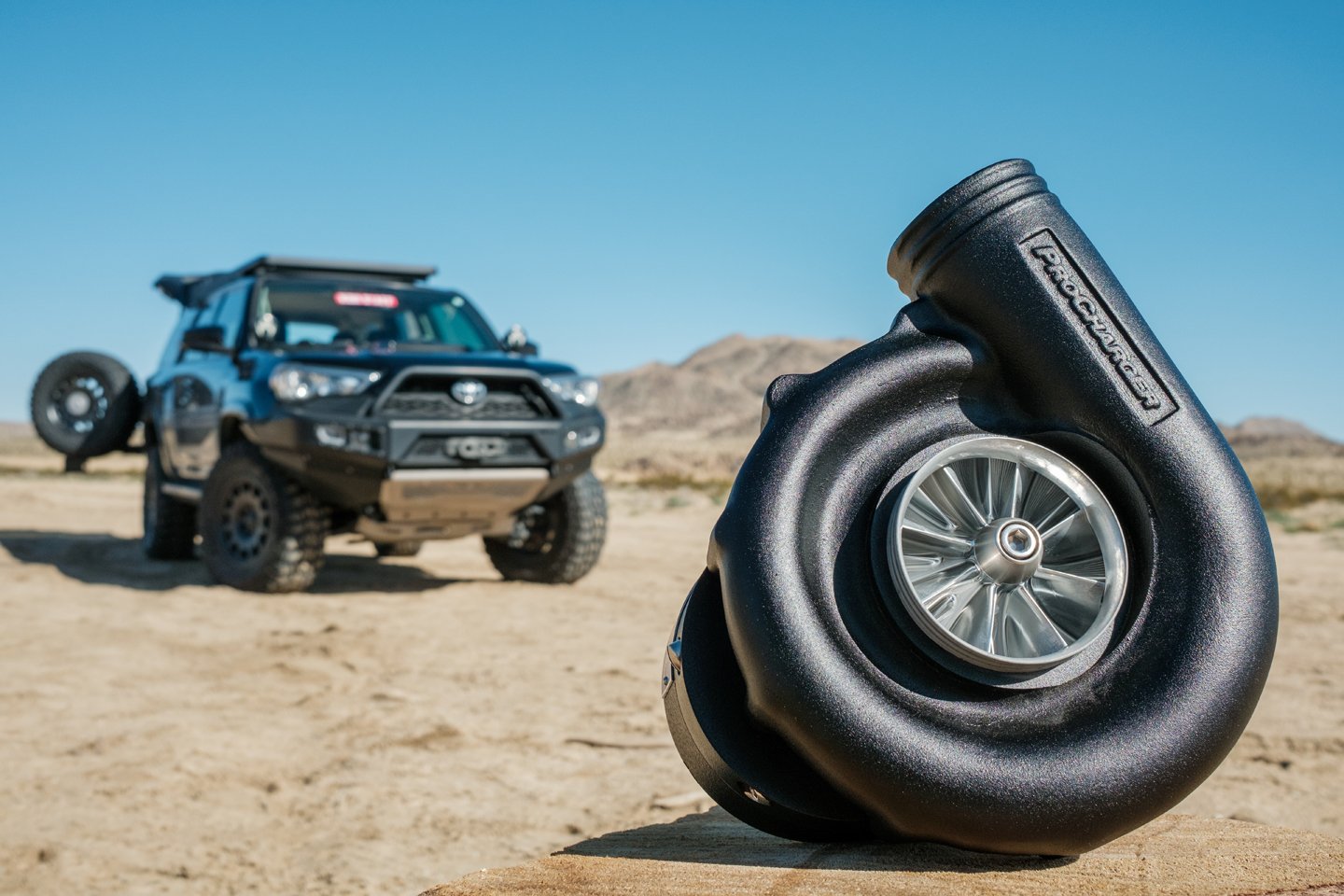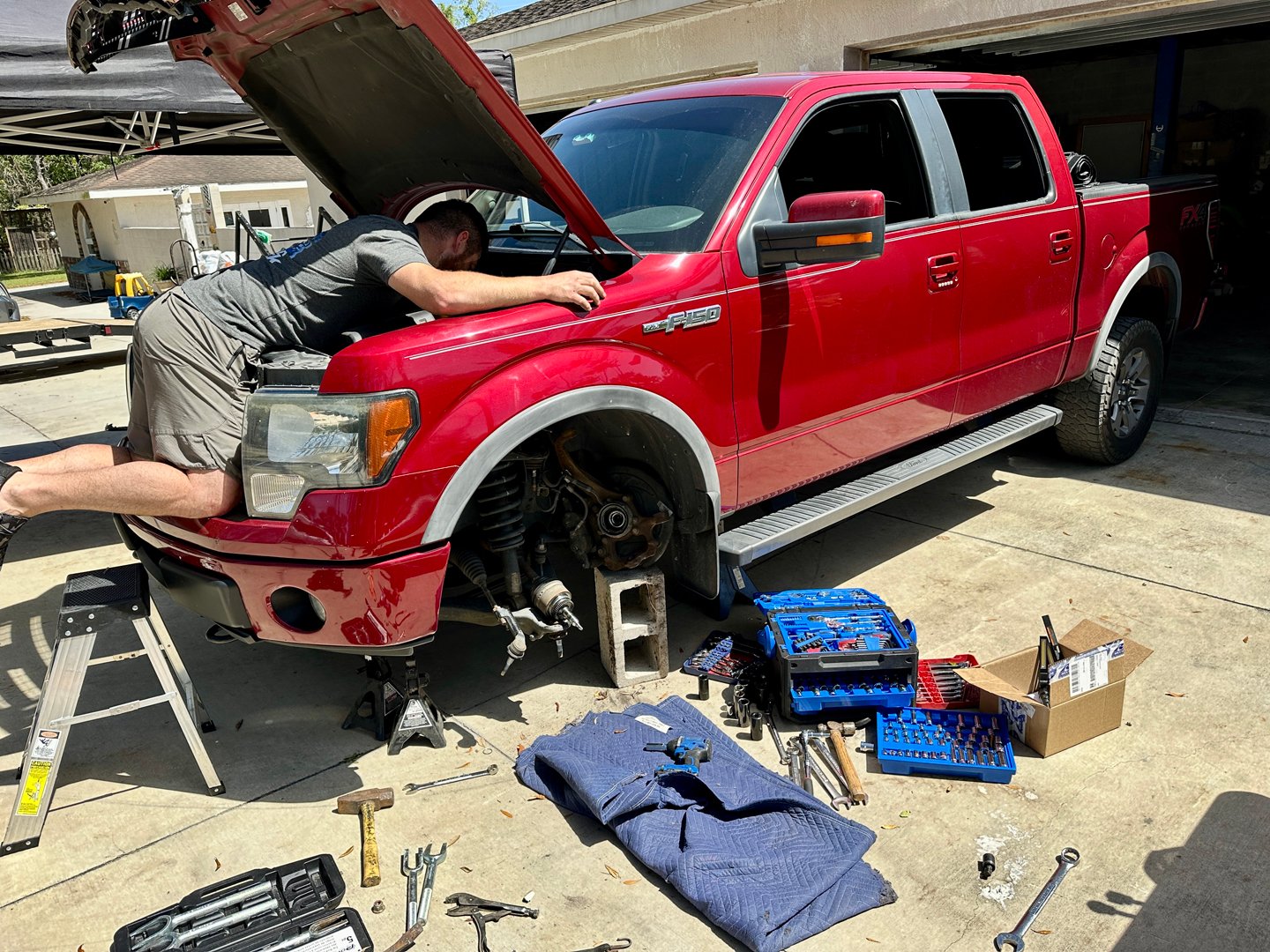Editor’s Update June 2022: As part of Off Road Xtreme’s super popular PreRunner Building article series, we wanted to link the collection here for your convenience. You can find all the articles linked as part of this update. PreRunner Building 101: The Basics, PreRunner Building 102: Beginner Vs. Advanced, PreRunner Building 103: Testing And Tuning, and PreRunner Building 104: What Is An Ultimate PreRunner?
In this third installment of our prerunner series, we will be talking about getting your prerunner dialed in, and taking it prerunning, or just out exploring in remote areas. Before you even leave the shop, you should do an extensive check on the entire vehicle. Don’t assume that you topped off the gear oil in the differential – CHECK IT! Make a check of all fluids. Climb all over and under to check all nuts and bolts for tightness.
Many teams will make a mark with a grease pencil, or paint pen to show that the bolt has been checked. If you make a line that travels across the bolt, or nut and terminates on the part it is holding, you can look at it and tell if it has moved. If the lines do not meet up, something has come loose.
Make A List And Keep Notes
A standard practice is to make a list of everything that has to be done. As tasks are completed, cross them off the list. You can also add to the list as you discover things that need attention. This is especially useful if you are working on your vehicle in stages. You might be deep in a train of thought at the time, but forget all about it in a few days. You will be surprised by all the last-minute details that will pile up before your maiden voyage.
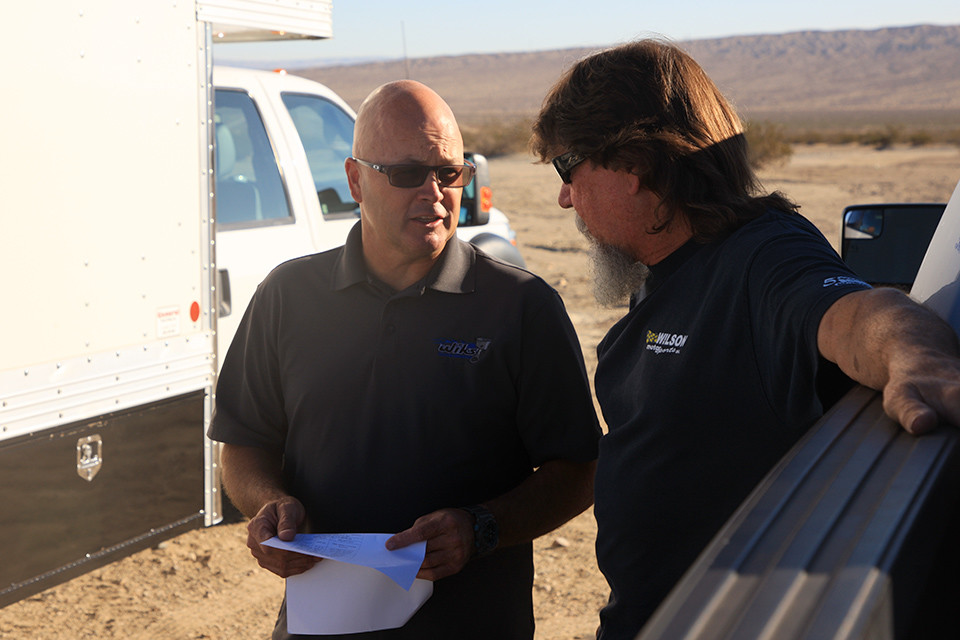
Adam Wik of Wiks Racing Engines and Mike Stapleton of Wilson Motorsports go over details before testing begins.
While you are giving everything a good look, be skeptical. Do you have loose wires that can rub against sheet metal? If the wires are thin, just the constant flexing can cause the copper strands to fatigue and eventually break. The same goes with fuel lines and hoses; they should allow engine movement, but not be allowed to flop around while driving.
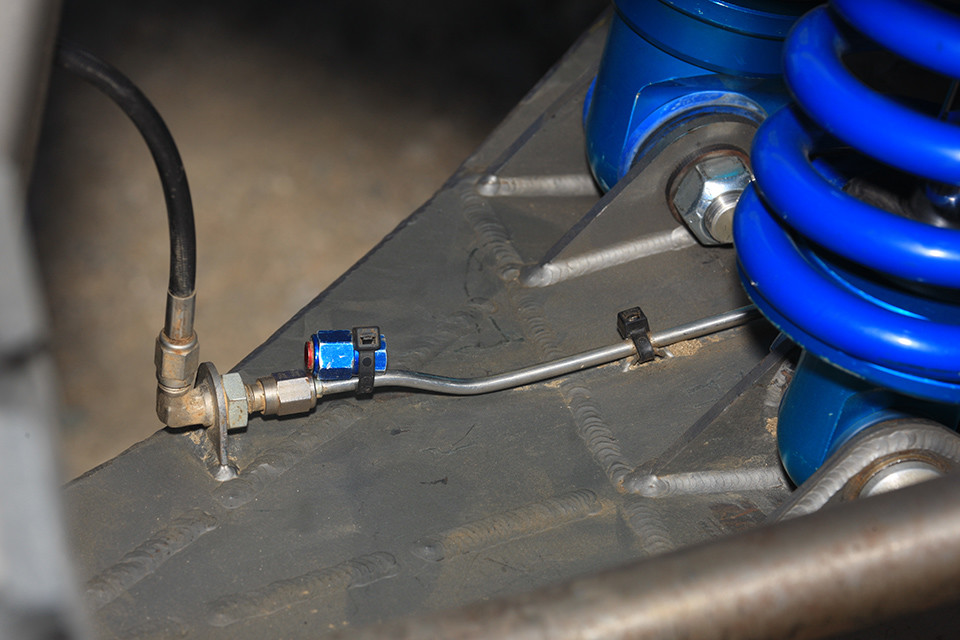
A well-secured brake line on a Wilson Motorsports Jimco. Note the fitting attached; this is so they can cap the line off if needed.
Document the air pressure in the tires, the charge pressure in the shocks, the ride height, the spring preload, sway bar settings, etc. Anything that has an adjustment or fluid level needs to be noted. This will be your baseline.
You should keep good records on your build regardless. You need to document gear ratio, drive axle lengths and diameter, etc. You should have the part numbers and manufacturer of all your parts handy. Many prerunners use parts from several different sources. Have a GM Saginaw steering pump on your Ford? It’s important to know what to ask for when dealing with the pimple-faced kid at the auto parts store when you are in a hurry.
Hitting The Dirt
When you fire up the engine, look for leaks in the fuel lines and coolant lines. Pump the brakes a couple times and check the brake lines for leaks. You can do this while you are waiting for the engine to come up to temperature. If you marked your nuts and bolts when you tightened them, give everything another quick glance.
Matt Burroughs and crew do a quick check of the Monster Energy Can-Am before hitting the dirt.
Most people will also go around and check that the lug nuts are tight and do a final air pressure check on the tires. If everything checks out, you can then do some additional dynamic checks while you are putting around near camp.
You are probably very anxious to get out and put some miles under your belt, but it’s wise to have some patience. Do some slow starts to check the torque convertor or clutch engagement. Check the steering; do some quick back and forth, and then do some low-speed turns in both directions at full lock. Be aware of how everything feels. Do some brake checks. Are the fronts locking up before the rear? Are you hearing any noises? You should do all of this before you head out miles from your tools and crew. You don’t want to take off, have a problem, and then have to hike back on foot. You did make sure your radio was working, right?
During the first attempt, the rear brakes were locking first. After some consultation from Randy Wilson and an adjustment, the front brakes had a slight amount more than the rear, just how driver Brian Wilson likes it.
Ready To Go
Once everything checks out, you can head out a little farther. If you are going to be running at race speeds, it’s best to do some reconnaissance. Are people camped close to the course you will be running? Are there kids around? Safety is VITAL! Find a test loop that does not include major crossroads where you know people regularly travel. It’s also wise to see who else is out testing, and where they will be running.
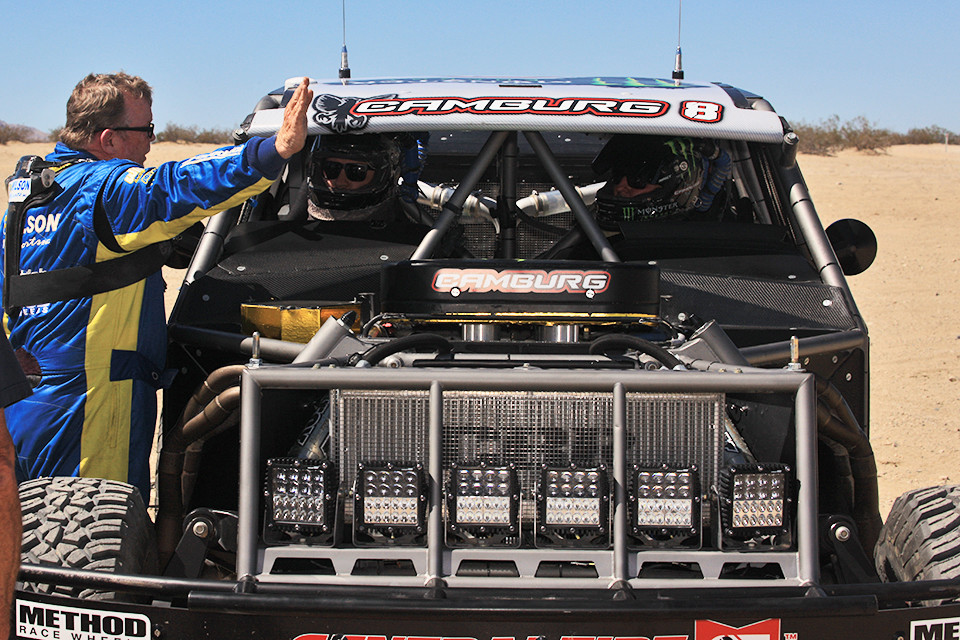
While out testing with Wilson Motorsports, the Camburg guys came over to let us know where they would be testing. The teams would be using separate loops for safety.
There are several places to test in different areas. By far, the most popular are in the Southwest U.S. or Baja. In California, you have Barstow Main, or Lucerne in SoCal, and along the road in Plaster City for San Diego people. In Arizona, there’s the Geiser Loop in Phoenix.
But just because you are in a frequently traveled area, don’t assume everyone knows that. Campers, rock hounds, photographers, hikers; many people use the desert that have no idea about you or your pastime. Stop in and let them know you will be going fast in the area. If you know they are there, you can always slow down as you approach.
Randy Wilson is deployed to act as a lookout, and to observe how the car works from outside the vehicle. He is in radio contact with the race car and the pits.
Many people go to the desert for solitude. If they are not happy about you running near their camp, find a different loop. There are tons of rocks, whoops, sand, silt, and ruts to choose from. Of course, if they are camped in the middle of Barstow main, you might want to let them know they are camped in what most people consider the fast lane of the freeway.
I have personal experience with this as I was out scouting a course for photo spots once and came across a fifth-wheel trailer parked across the course. Thinking I was being a good citizen, I warned the owner that there would be a race starting in about an hour and that he was parked on the course. Instead of gratitude, I was yelled at by the camper that he “had been coming here for years.” The fact is that some people are just unreasonable. Don’t add to the problem.
What You Gain From Tuning
Running at speed in the desert puts huge demands on every system, but none as great as your shocks and suspension. If you are new to this, seeking the help of a shock tuning expert can yield incredible gains. The most important thing to get right is your spring rates. The springs hold your rig up, and the shocks control how the suspension moves. Until you have the spring rates correct, all the shock tuning in the world will not matter.
Most shock manufacturers have tuners that they employ or recommend. There are also independent tuners that will work for teams or individuals. They are all in high demand because tuning is a sort of art. You might feel something by the seat of your pants that you don’t like. A tuning expert can take that information and make adjustments to compensate. They can also observe your vehicle working, and know what needs to be addressed.
Crew chief Mike Stapleton makes a bypass tube adjustment, and then writes directly onto the tube the change that was made.
You may think your vehicle rides great, but are unaware of how good it can really be. I’ve seen that happen many times while tuning with the experts. Shocks and springs look very simple, but sometimes the most subtle adjustments can make a huge impact on handling. Keeping your tires planted to the ground will improve steering, braking, and acceleration. It’s also important that the driver and passengers are comfortable.

Driver Brian Wilson relays information about how the car is handling to other drivers Kyle Quinn and Randy Wilson.
Prerunning And Self-Recovery
Now that your vehicle is dialed in, it’s time to hit the road less traveled. Prerunning in the U.S. has become practically obsolete, but it’s a necessity in Baja. If you are just planning to do some backcountry traveling, the same practices used while prerunning can come in handy. You will be heading into the unknown so it’s important to be prepared.
If your vehicle is two-wheel-drive, you’d better have some methods for self-extraction. There are many tools you can use. The most basic is a shovel. Sand ladders are also a good addition to your recovery tools. If you have a truck, a winch is a great item to have. You can also bring a come-a-long or hand-operated winch. You should always carry a snatch strap or tow rope with a means to attach it to either end of your vehicle.
Also under the topic of self-recovery is a good assortment of tools and spare parts. Belts, hoses, fluids, ignition parts, epoxy, silicone sealant, hose clamps, bailing wire, zip ties, and assorted bolts are all the bare minimum to bring. For some, a satellite phone is all they need. For those of us who are more self-sufficient, a good knowledge of our vehicle’s idiosyncrasies and a parts assortment catered to it are all we need.
What About You?
If you are traveling far and wide, you also have to consider your personal needs. Do you have vital medications along? What about food, water and toilet paper? You can never have too much water on hand.
Baby wipes are great for cleaning your hands or wiping the dirt off your face after 100 miles of silt. Many times you might not need it, but someone you meet on the trail will.
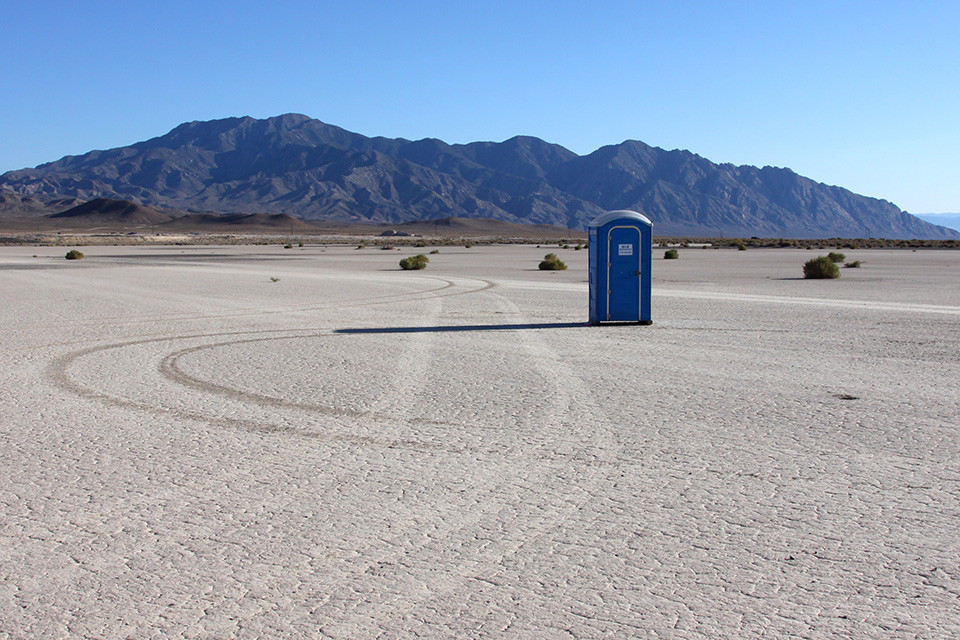
Chances are you won’t come across one of these in the middle of nowhere. Toilet paper can be a luxury in some places.
There is an unwritten code in off-road – that we all look out for each other. When you see someone stopped, ask them if they are okay. Be prepared to give them supplies or loan them tools. Everything you give will come back to you in the future, or will just grace you with good karma.
Getting out and experiencing places that most people won’t is unbelievably rewarding. Having a capable vehicle to get you there and back safely is a must, and the responsibility is yours. Make sure it will be a fun trip instead of a stressful ordeal. If you come prepared, you can handle anything that comes your way.

